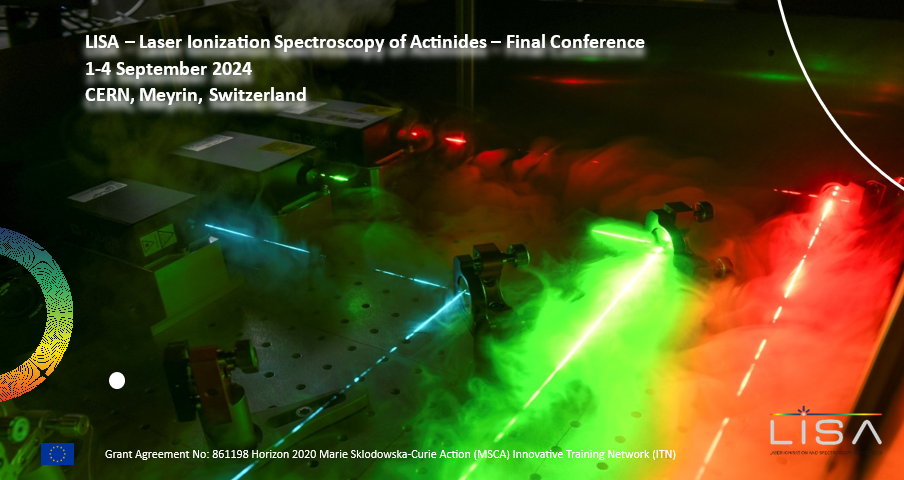Speaker
Description
Studies of the atomic spectrum through resonant laser excitation provide access to the nuclear structures. Precise measurements of the interactions of the nuclear ground state with the electronic shell permit the extraction of nuclear properties which are closely related to the nucleus’ configuration and shape [1]. With atomic transitions of the valence electrons in the range of a few eV, these are accessible with lasers. However, this method is limited by the low production yields of the isotope of interest, a scarce knowledge on the atomic structure [2], and the capacity to produce the relevant wavelength.
For high-resolution laser spectroscopy, the optical linewidth must be low enough to resolve the atomic lines up to the hyperfine structure (HFS) but should not be much narrower than the resolution-limiting effect of the specific experimental setup to maximize the efficiency [3]. Depending on the spectroscopy technique in use, resonance peak linewidths can be as low as 40-70 MHz [4], sufficient to resolve the HFS in most elements. At the cost of rather challenging experimental setups, pulsed laser light with an optical linewidth of less than 50 MHz has been reported [5] by the amplification of a cw-dye laser in a pulsed dye amplifier (PDA), and of 20 MHz [6] by injection-locking a titanium:sapphire (Ti:Sa) with a narrow-linewidth cw-Ti:Sa. On the other hand, an optical parametric oscillator (OPO) seeded PDA system has demonstrated [7] comparable performance in the range near 330 nm with an optical linewidth in the order of 100 MHz, which will be presented in this work.
As more exotic nuclides are accessible, new laser techniques are needed to produce adequate wavelengths in notoriously challenging ranges, whilst maintaining power stability and optical narrow-band operation [8, 9, 10]. For instance with the off-line high-resolution spectroscopy studies on Fm-255, presented in this work, and performed at Mainz University, using the Perpendicularly Illuminated Laser Ion Source and Trap (PI-LIST) together with a diode pumped cw-Ti:sa injection-locked pulsed Ti:sa laser system. However, only two excitation schemes were available to reach due to the lack of a suitable narrow-band laser in the wavelength of interest outside of the cw-Ti:sa seed range. In this context, we propose in this work an all-solid-state system based on an OPO seeded optical parametric amplifier (OPA) to generate narrow-band, high-energy pulses for high-resolution laser ionization spectroscopy, in the range of 1000 nm to 1530 nm to be subsequently frequency doubled or tripled, in order to obtain the desired experimental wavelength.
